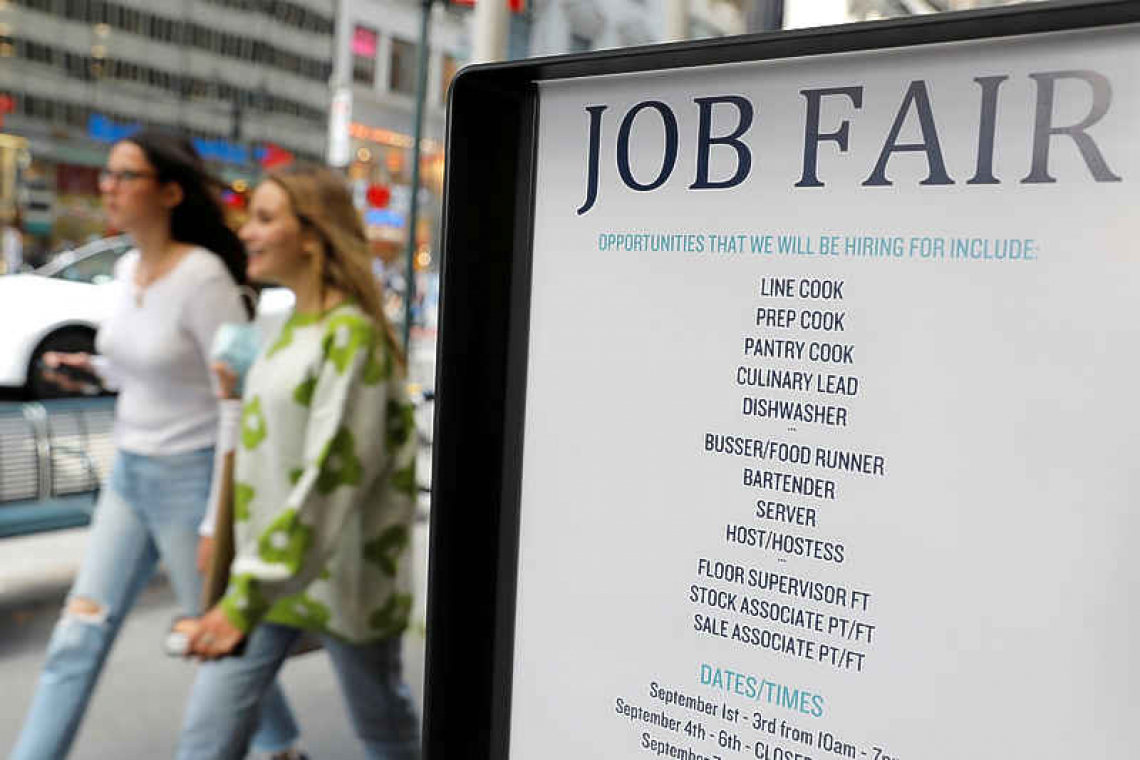WASHINGTON--U.S. job openings raced to a new record high in July while layoffs rose moderately, suggesting last month's sharp slowdown in hiring was due to employers being unable to find workers rather than weak demand for labor.
The Labor Department's monthly Job Openings and Labor Turnover Survey, or JOLTS report, on Wednesday also showed a steady increase in the number of workers voluntarily quitting their jobs, a sign of confidence in the labor market.
"This is a super tight job market," said Jennifer Lee, a senior economist at BMO Capital Markets in Toronto. "The ongoing struggle to find the right worker for the right role continues."
Job openings, a measure of labor demand, jumped 749,000 to 10.9 million on the last day of July, the highest level since the series began in December 2000. It was the fifth straight month that job openings, which have been increasing since January, hit a record high.
Economists polled by Reuters had forecast vacancies rising to 10 million. July's broad increase was led by the healthcare and social assistance, finance and insurance, and accommodation and food services industries.
Job openings rose in the Northeast, South, Midwest and West regions. The job openings rate surged to a record 6.9% from 6.5% in June, driven by medium-sized businesses with 50-249 workers. The rate for large firms with 5,000 or more employees fell.
Hiring slipped 160,000 to 6.7 million, pulled down by decreases in retail trade, durable goods manufacturing and educational services. State and local government education hiring increased, as did federal government employment.
The hiring rate fell to 4.5% from 4.7% in June. The hires rate dropped for large businesses.
Stocks on Wall Street fell. The dollar rose against a basket of currencies. U.S. Treasury prices were higher.
The job openings to hires ratio, a measure of labor market tightness and companies' ability to find workers, rose to 1.64 in July. The JOLTS data followed in the wake of a government report last Friday that showed nonfarm payrolls increased by only 235,000 jobs in August, the smallest gain since January, after surging by 1.053 million in July.
Labor market tightness was underscored by the Federal Reserve's Beige Book report on Wednesday, based on information collected on or before Aug. 30, which showed "all Districts noted extensive labor shortages that were constraining employment and, in many cases, impeding business activity."
The COVID-19 pandemic has upended labor market dynamics, creating worker shortages even as 8.4 million people are officially unemployed. Lack of affordable childcare, fears of contracting the coronavirus, generous unemployment benefits funded by the federal government as well as pandemic-related retirements and career changes have been blamed for the disconnect.
The labor crunch is expected to ease starting in September, with the government-funded unemployment benefits having expired on Monday. The new school year is underway and most school districts are offering in-person learning.
But soaring COVID-19 cases, driven by the Delta variant of the coronavirus, could cause reluctance among some people to return to the labor force. Employment is 5.3 million jobs below its peak in February 2020.







